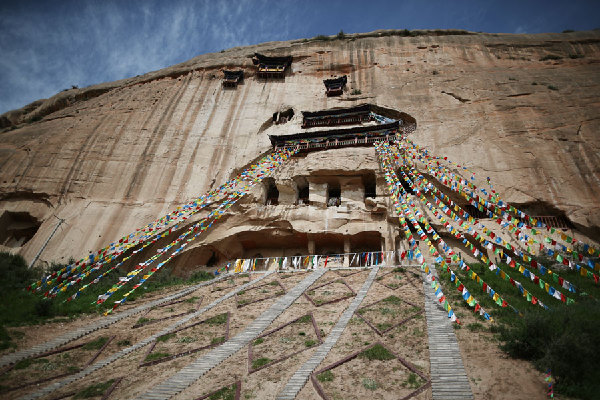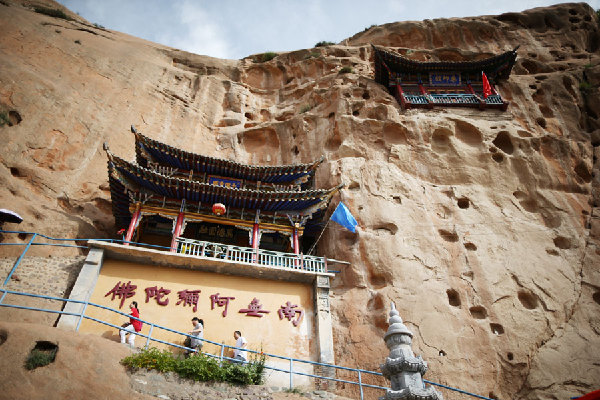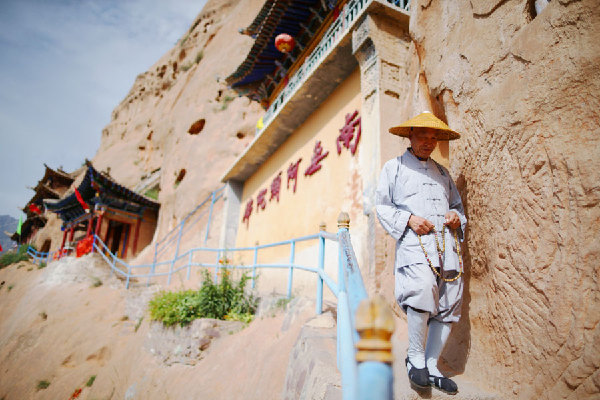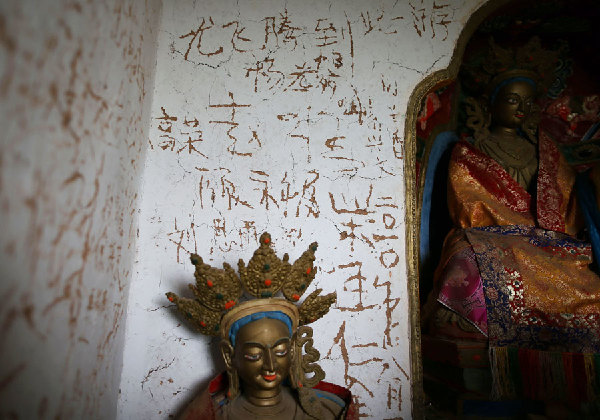Sights
Matisi Grottoes (Zhangye)
Updated: 2013-11-02( chinadaily.com.cn )
The Matisi Grottoes cover about 100 square kilometers in Sunan, a Yugu ethnic autonomous county 600 kilometers from Gansu's provincial capital Lanzhou. Mati means "horse hoof" and si means "temple". The first caves were dug about 1,600 years ago. Most were chiseled into temples, such as the North Matisi Grottoes carved into a 100-meter-high cliff. The 21 caves are arranged in seven stories.
 |
|
The Matisi Grottoes cover about 100 square kilometers in Sunan, a Yugu ethnic autonomous county 600 kilometers from Gansu's provincial capital Lanzhou. Mati means "horse hoof" and si means "temple". The first caves were dug about 1,600 years ago. Most were chiseled into temples, such as the North Matisi Grottoes carved into a 100-meter-high cliff. The 21 caves are arranged in seven stories. Visitors climb narrow stone stairs to see the top grotto's Bodhisattva Lyudumu in a shrine. Every story contains statues.[Photo by Chen Xi/China Daily] |
 |
|
The Matisi Grottoes cover about 100 square kilometers in Sunan, a Yugu ethnic autonomous county 600 kilometers from Gansu's provincial capital Lanzhou. Mati means "horse hoof" and si means "temple". The first caves were dug about 1,600 years ago. Most were chiseled into temples, such as the North Matisi Grottoes carved into a 100-meter-high cliff. The 21 caves are arranged in seven stories. Visitors climb narrow stone stairs to see the top grotto's Bodhisattva Lyudumu in a shrine. Every story contains statues.[Photo by Chen Xi/China Daily] |
 |
|
The Matisi Grottoes cover about 100 square kilometers in Sunan, a Yugu ethnic autonomous county 600 kilometers from Gansu's provincial capital Lanzhou. Mati means "horse hoof" and si means "temple". The first caves were dug about 1,600 years ago. Most were chiseled into temples, such as the North Matisi Grottoes carved into a 100-meter-high cliff. The 21 caves are arranged in seven stories. Visitors climb narrow stone stairs to see the top grotto's Bodhisattva Lyudumu in a shrine. Every story contains statues.[Photo by Chen Xi/China Daily] |
 |
|
The Matisi Grottoes cover about 100 square kilometers in Sunan, a Yugu ethnic autonomous county 600 kilometers from Gansu's provincial capital Lanzhou. Mati means "horse hoof" and si means "temple". The first caves were dug about 1,600 years ago. Most were chiseled into temples, such as the North Matisi Grottoes carved into a 100-meter-high cliff. The 21 caves are arranged in seven stories. Visitors climb narrow stone stairs to see the top grotto's Bodhisattva Lyudumu in a shrine. Every story contains statues.[Photo by Chen Xi/China Daily] |


